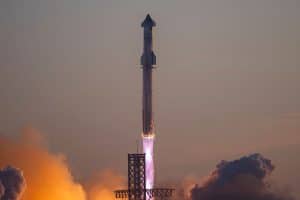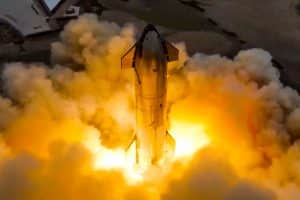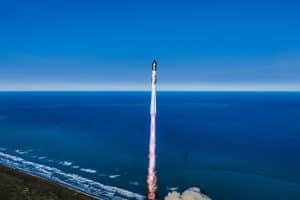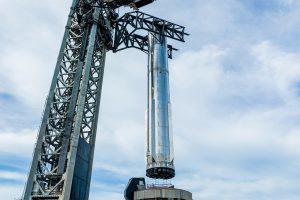For the sixth time this year, SpaceX has returned the same Super Heavy booster prototype to its South Texas Starship factory after completing several tests.
Why is unclear. Super Heavy Booster 7 left the factory for the first time in March 2022 and has been stuck in a seemingly continuous state of testing, rework, and retesting ever since. While the pace of testing and progress was in many ways more aggressive from 2019 to mid-2021, it still can’t be said that SpaceX has been slacking off in 2022. Booster 7 alone completed more than 24 distinct tests (including six static fires) between early April and late November.
But in a shift from the first three or so years of steel Starship development, SpaceX CEO Elon Musk has ceased to be a consistent source of information on the purpose and results of many of those tests, even as NASA has begun to funnel hundreds of millions of taxpayer dollars into the Starship program. Save for occasional tidbits from SpaceX, Musk, and NASA; or deep unofficial analyses of public information, the day-to-day or week-to-week status of Starship has generally been relegated to speculation. Over the last few months, that information void has only grown larger.
Perhaps the biggest near-term update this year came from a senior NASA official on October 31st. In an advisory briefing, Mark Kirasich – Deputy Associate Administrator for Artemis Campaign Development – offered a surprising amount of detail about SpaceX’s near-term plans and even reported that Starship’s first orbital test flight was expected as early as December 2022, pending several crucial tests. But more than five weeks later, SpaceX appears to have only made a modest amount of progress towards those milestones and has yet to attempt the two most important tests.
Nonetheless, some progress – however indeterminate without official information – has been made. As of Kirasich’s briefing, SpaceX was in the middle of a relatively minor series of cautious propellant loading tests with Booster 7 and Ship 24, which were stacked on October 20th. After three more partial full-stack tests in the first seven days of November, Ship 24 was removed. Aside from the visible steps SpaceX took after, little is known about the outcome of those propellant loading tests.
Ship 24’s fate is a different story, but Super Heavy B7 appeared to make it through full-stack testing in great shape. On November 14th, Booster 7 completed a record-breaking 14-engine static fire, doubling its previous record of seven engines and likely becoming one of the most powerful rockets in history. Musk simply stated that the “test went well”.
Poor weather undoubtedly contributed, but it would be another 15 days before Booster 7’s next test. On November 29th, after an aborted test on the 28th, SpaceX followed Booster 7’s record-breaking 14-engine static fire with a longer 13-second test of 11 Raptors. Before engine ignition, SpaceX loaded Booster 7 with around 2800 tons (~6.2M lb) of liquid oxygen (LOx) propellant in less than 90 minutes, making it a partial wet dress rehearsal (the methane tank was barely filled) as well. Musk called it “a little more progress towards Mars” and SpaceX shared a photo of the static fire on Twitter, but the results of the test – meant “to test autogenous pressurization” – were kept mostly opaque.
That uncertainty didn’t help when two of Booster 7’s 33 Raptor engines were removed immediately after the long-duration test. Then, Booster 7 was removed from Starbase’s lone ‘orbital launch mount’ on December 2nd and rolled back to the factory’s High Bay assembly facility on December 3rd. Historically, SpaceX has only returned Booster 7 to the factory to repair damage or install missing hardware. Without official information, it’s impossible to say why Booster 7 returned for the sixth time.
The most optimistic explanation is that SpaceX brought the Super Heavy booster back to the factory to fully close out its engine section heat shield, which currently has 20 missing panels for each of its outer Raptor engines. But there’s a good reason that those panels were never reinstalled. Any replacements would need to be modified to ensure that the ad-hoc system installed to prevent the conditions that led to Booster 7’s first explosion from recurring can still be used for future static fire tests. Even then, it’s unclear why SpaceX would need to reinstall those panels now for Booster 7’s upcoming 33-engine static fire(s) and full-stack wet dress rehearsal(s) when they weren’t needed for 11 and 14-engine static fires and a dozen other fire-free tests.
Depending on why Booster 7 is back at the factory, there is a precedent for it returning to the launch site as early as next week. Alternatively, if major work or repairs are required, it could be six weeks before SpaceX returns the rocket to the launch pad. Given that the full wet dress rehearsals and one or several 33-engine static fires standing between Booster 7 and flight readiness will be riskier and more challenging than any other test the prototype has completed to date, there is no real chance that Starship will be ready for its first orbital launch this year.
In fact, without detailed information, especially regarding Ship 24’s mysterious state, it’s difficult to pinpoint a viable target for Starship’s orbital launch debut more specific than the first half of 2023. But with any luck, even if it requires a substantially longer wait, SpaceX’s recent decision to make Starbase move slower and break fewer things will hopefully pay off with a successful debut sometime next year.





